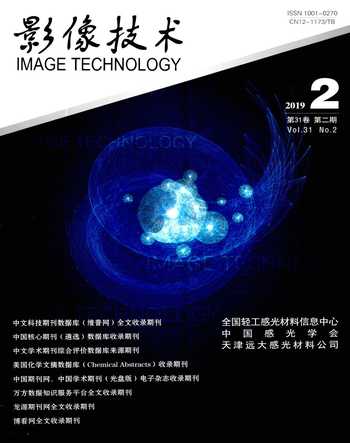颈椎病CT检查及临床诊断作用探究
霍红丽

关键词:颈椎病;CT诊断;临床分析
中图分类号:R445.3;R681.5 文献标识码:A DOI:10?郾3969/j.issn.1001-0270.2019.02.11
Abstract: Objective: To study the role of CT examination and clinical diagnosis in cervical spondylosis. Methods: 140 patients with cervical spondylosis diagnosed by imaging examination were studied in our hospital from July 2016 to April 2017. The patients were divided into control group and observation group according to different examination methods, 70 cases in each group. The patients in observation group were examined by CT. The patients in control group were examined by X-ray. The accuracy of cervical curvature abnormality, cervical facet joint osteoporosis, cervical intervertebral space stenosis, cervical kyphosis hyperplasia, cervical osseous spinal canal stenosis, ligamentum flavum hypertrophy, cervical vertebral posterior margin osteophyte formation and cervical intervertebral foramen stenosis were compared between the two groups. Results: Compared with the control group with X-ray examination, the accuracy of diagnosing cervical curvature abnormality, ligamentum flavum hypertrophy and cervical intervertebral stenosis was higher in the observation group with CT examination, and the difference between the two groups was statistically significant(P<0.05). The accuracy rate of diagnosis of cervical facet joint osteoporosis, cervical uncinate process hyperplasia, cervical vertebral canal stenosis, cervical intervertebral foramen stenosis, cervical vertebral posterior margin osteophyte formation was higher, and the difference between groups was statistically significant (P<0.05). Conclusion: The clinical effect of CT examination in the diagnosis of cervical spondylosis is better, and the patients with cervical spondylosis can be diagnosed by CT examination according to the patient's condition.
Key Words: Cervical Spondylosis; CT Diagnosis; Clinical Analysis
對于颈椎病的诊断多采用颈椎X线片检查,能在一定程度上反应颈椎椎体的骨质结构[1],但是不能明确颈椎周围神经及血管的情况,给临床诊断和治疗带来困难[2]。本次研究分析我院确诊的颈椎病患者采用CT扫描诊断颈椎病的临床效果,为临床诊断、治疗颈椎病提供经验积累,并为CT扫描检查诊断颈椎病提供相关数据,现进行分析报道。
1 资料和方法
1.1 临床资料
研究对象为我院2016年7月至2017年4月间收治的经影像学检查确诊的颈椎病患者140例,其中男性87例,女性53例,年龄在32-65岁之间,平均年龄46.5岁。患者临床表现为头痛、头晕、颈肩酸痛、呕吐、恶心、下肢乏力、上肢麻木、晕厥等症状。将患者根據检查方法不同分为对照组和观察组,对照组70例患者中男43例,女27例,年龄32-60岁之间,平均年龄46.9岁,观察组70例患者中男44例,女26例,年龄33-65岁之间,平均年龄44.4岁。所有诊断和治疗均经患者同意,并签订知情同意书。对照组和观察组患者进行组间比较临床资料的数据差异无统计学意义(P>0.05),具有可比性。
1.2 纳入和排除
纳入标准:患者病情符合颈椎病的临床标准,年龄在21-75岁,并且均有较好依从性患者。排除标准:年龄不到21岁或超过75岁,存在代谢性骨病患者,并患有精神病或语言障碍的患者,妊娠及哺乳期女性。
1.3 观察指标
比较观察两组应用不同方法诊断的颈椎病患者颈椎曲度异常、颈椎小关节骨质增生、颈椎间隙狭窄、颈椎钩突增生、颈椎骨性椎管狭窄、黄韧带肥厚、颈椎椎体后缘骨赘形成、颈椎椎间孔狭窄结果准确率。
1.4 统计学分析
相关数据应用统计学处理软件SPSS18.0进行分析,计数资料用构成百分比表示,进行组间卡方分析,计量资料用均数及标准差表示,进行组间t检验,当P<0.05则表示数据差异具有统计学意义。
2 结果
与采用X线检查的结果比较,应用CT检查诊断颈椎曲度异常、黄韧带肥厚、颈椎间隙狭窄的准确率更高,组间比较数据差异具有统计学意义(P<0.05);与采用CT扫描检查比较,引用X线检查诊断颈椎小关节骨质增生、颈椎钩突增生、颈椎骨性椎管狭窄、颈椎椎间孔狭窄、颈椎椎体后缘骨赘形成的准确率较高,组间比较数据差异具有统计学意义(P<0.05),数据见表1。
3 讨论
本次研究结果显示,与采用X线检查的对照组结果比较,应用CT检查的观察组患者诊断颈椎曲度异常、黄韧带肥厚、颈椎间隙狭窄的准确率更高,组间比较数据差异具有统计学意义(P<0.05);与采用CT扫描检查的观察组比较,应用X线检查的对照组患者诊断颈椎小关节骨质增生、颈椎钩突增生、颈椎骨性椎管狭窄、颈椎椎间孔狭窄、颈椎椎体后缘骨赘形成的准确率较高,组间比较数据差异具有统计学意义(P<0.05)。综上,应用CT检查诊断颈椎病临床效果较好,可根据患者情况应用CT进行检查确诊颈椎病患者。
参考文献:
[ 1 ]周健,梁改琴,贾有福.DR结合64排螺旋CT扫描在胸部创伤诊断中的临床应用价值[J].中国初级卫生保健,2014,28(5):118-119.
[ 2 ]黄海鹏,林少杰.青少年颈椎病影像特点分析及螺旋CT应用价值研究[J].中国民族民间医药,2015(5):118-120.

